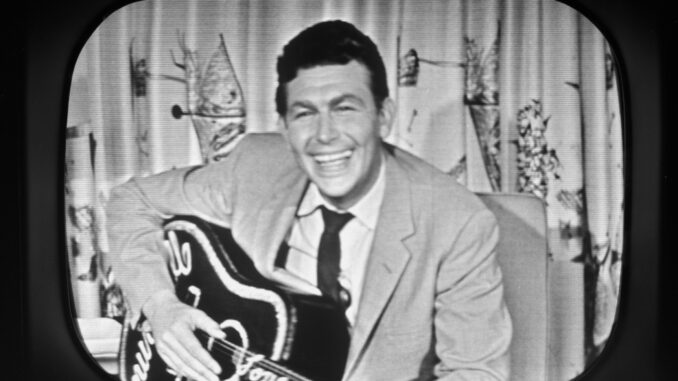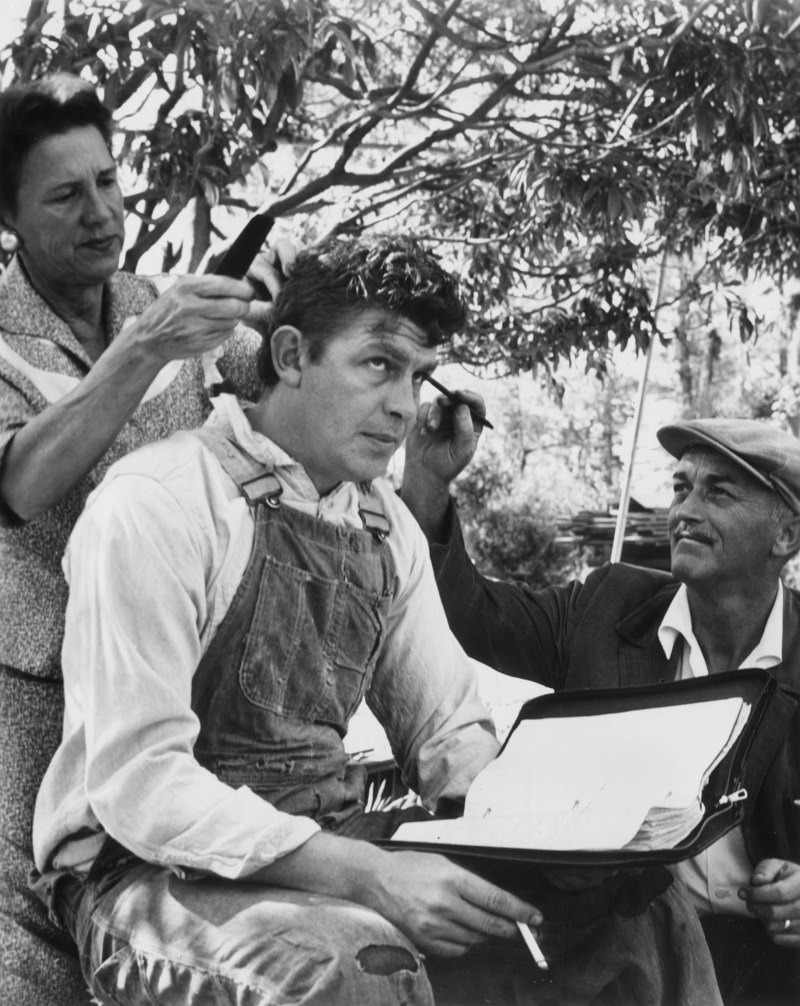
Introduction: More Than Just Mayberry
When most people hear the name Andy Griffith, they immediately picture the friendly sheriff of Mayberry, fishing rod in hand, walking down a dirt path with young Opie. But Andy Griffith was far more than a small-town lawman on TV. He was a gifted storyteller, an underrated dramatic actor, a stand-up comic, and even a Grammy-winning gospel singer.
Let’s take a deep dive into the life and career of the man who made America fall in love with slow-paced, small-town living — and why his work still resonates today.
Early Life: A Humble Start in Mount Airy
Born to Entertain
Andy Samuel Griffith was born on June 1, 1926, in Mount Airy, North Carolina — the town that would later inspire the fictional Mayberry. Raised by working-class parents during the Great Depression, Andy’s childhood was anything but glamorous. But even then, he showed signs of a performer in the making.
A Love for Music and Drama
While Griffith initially set his sights on becoming a Moravian preacher, his heart ultimately pulled him toward the stage. He earned a music degree from the University of North Carolina at Chapel Hill, where he studied to become a Moravian minister — before realizing his true passion was performance.
The Rise of a Southern Storyteller
Monologue Mastery: “What It Was, Was Football”
Before Mayberry ever existed, Andy made a name for himself with a comedy monologue called “What It Was, Was Football.” It was a clever, folksy routine that painted a hilariously innocent picture of a country preacher discovering football for the first time. This recording launched Griffith into national fame and showcased his genius for observational humor.
Broadway Bound
In 1955, Andy Griffith stunned audiences in “No Time for Sergeants,” both on stage and in the later film adaptation. His role as a naïve but lovable Air Force draftee showed that he could turn everyman charm into box office gold. The performance even earned him a Tony nomination.
Hollywood Beckons: The Film Years
A Dramatic Turn in ‘A Face in the Crowd’
Perhaps one of Griffith’s most shocking performances came in Elia Kazan’s A Face in the Crowd (1957), where he played Lonesome Rhodes — a manipulative, drunken drifter turned media sensation. It was a dark and riveting departure from his comedic roots. Critics still hail this role as one of his most powerful.
Balancing Comedy and Character
Andy could switch between humor and drama with incredible ease. His early filmography is filled with characters who feel real, grounded, and relatable — a reflection of Griffith’s own upbringing and humility.
The Birth of ‘The Andy Griffith Show’
How Sheriff Andy Taylor Came to Be
In 1960, Griffith guest-starred on an episode of The Danny Thomas Show as a small-town sheriff. Audiences loved him so much that CBS spun it off into its own series: The Andy Griffith Show. And the rest, as they say, is television history.
A Slice of Americana
The show was more than just entertainment; it was a warm blanket during uncertain times. With its mix of down-home humor, moral lessons, and unforgettable characters, it quickly became a staple in American households.

Building the World of Mayberry
The Cast That Made It Work
Andy surrounded himself with incredible talent — Don Knotts as the bumbling Barney Fife, Frances Bavier as Aunt Bee, Ron Howard as Opie, and a supporting cast that brought Mayberry to life. Andy was the show’s heart, but he always let others shine.
Behind-the-Scenes Generosity
Griffith wasn’t just the lead actor — he was a mentor and leader on set. He gave creative input, encouraged Don Knotts’ comedy, and helped mold young Ron Howard’s performance style. His kindness made the show feel authentic both on and off screen.
A Sudden Exit: Leaving Mayberry Behind
Why Andy Walked Away
After eight seasons, Griffith left the series in 1968. He wanted to explore new roles and avoid being typecast. Though Mayberry R.F.D. carried on without him, it never captured the same magic.
Griffith’s Next Chapter
Andy tried several projects afterward — some successful, others less so. But he was never quite able to shake the shadow of Sheriff Taylor… until a courtroom drama gave him a second act.
The Return: ‘Matlock’ and Late Career Success
Ben Matlock: Southern Lawyer, Big Personality
In 1986, Griffith re-entered TV stardom with Matlock, a courtroom drama where he played a folksy but sharp Atlanta defense attorney. The show gave him a whole new generation of fans and ran for nine seasons.
Griffith’s Secret Weapon: Authenticity
Even as Matlock, Griffith retained the charm that made him famous. His characters always had one thing in common: heart. He never played a role without bringing genuine humanity to it.
The Music Man: A Grammy-Winning Career
Back to His Roots
Andy never lost his love for music. Throughout his life, he recorded multiple gospel albums, even winning a Grammy in 1997 for I Love to Tell the Story – 25 Timeless Hymns.
Faith, Family, and Folk Songs
His musical work reflected the same values he brought to TV — faith, decency, and simplicity. His voice, warm and full of soul, carried the same comfort as his storytelling.
Griffith’s Impact on Pop Culture
Mayberry as a Cultural Symbol
Mayberry wasn’t just a fictional town; it became a symbol of idealized American life. Even today, “Mayberry” is used as shorthand for small-town simplicity, and that’s a direct result of Griffith’s creative vision.
Influencing Generations of Storytellers
Writers, directors, and actors often cite Griffith as an influence. From Parks and Recreation to Stranger Things, echoes of Mayberry’s structure and storytelling pop up across genres.
Personal Life and Challenges
Behind the Curtain
While Andy appeared happy on-screen, he had his share of real-life struggles — including a difficult first marriage and some friction with cast members. He was a complex man, not unlike many of the characters he played.
Private But Proud
He preferred to keep his private life out of the spotlight. He married three times, had two children, and spent most of his later life in North Carolina, close to his roots.
Final Years and Legacy
The Day the Whistle Stopped
Andy Griffith passed away on July 3, 2012, at the age of 86. Fittingly, he was buried within five hours in a private family ceremony — on his beloved Roanoke Island.
Gone, But Never Forgotten
Even years after his death, reruns of The Andy Griffith Show still air daily, and his legacy continues to shape American television.
Conclusion: Why Andy Still Matters
Andy Griffith didn’t just play a character — he embodied a way of life. He reminded audiences that decency, humor, and kindness still have a place in this world. From a small-town boy with a big voice to a cultural icon whose impact is still felt today, Griffith lived the American dream… and gave us all a reason to smile a little more.
FAQs
1. What inspired Andy Griffith to create the town of Mayberry?
Mayberry was inspired by Andy’s real-life hometown of Mount Airy, North Carolina. He drew on personal memories to make the show authentic and nostalgic.
2. Did Andy Griffith and Don Knotts remain friends in real life?
Yes! The two shared a close friendship off-screen that lasted for decades, even beyond their time together on The Andy Griffith Show.
3. Was Andy Griffith a musician before becoming an actor?
Absolutely. He held a music degree and began his career performing music and comedic monologues before landing acting roles.
4. Why did Andy Griffith leave ‘The Andy Griffith Show’?
Griffith wanted to pursue other creative opportunities and avoid being permanently typecast as Sheriff Taylor.
5. What was Andy Griffith’s most underrated performance?
His role in A Face in the Crowd remains one of his most powerful and underappreciated performances, showing a darker and more complex side of his talent.
